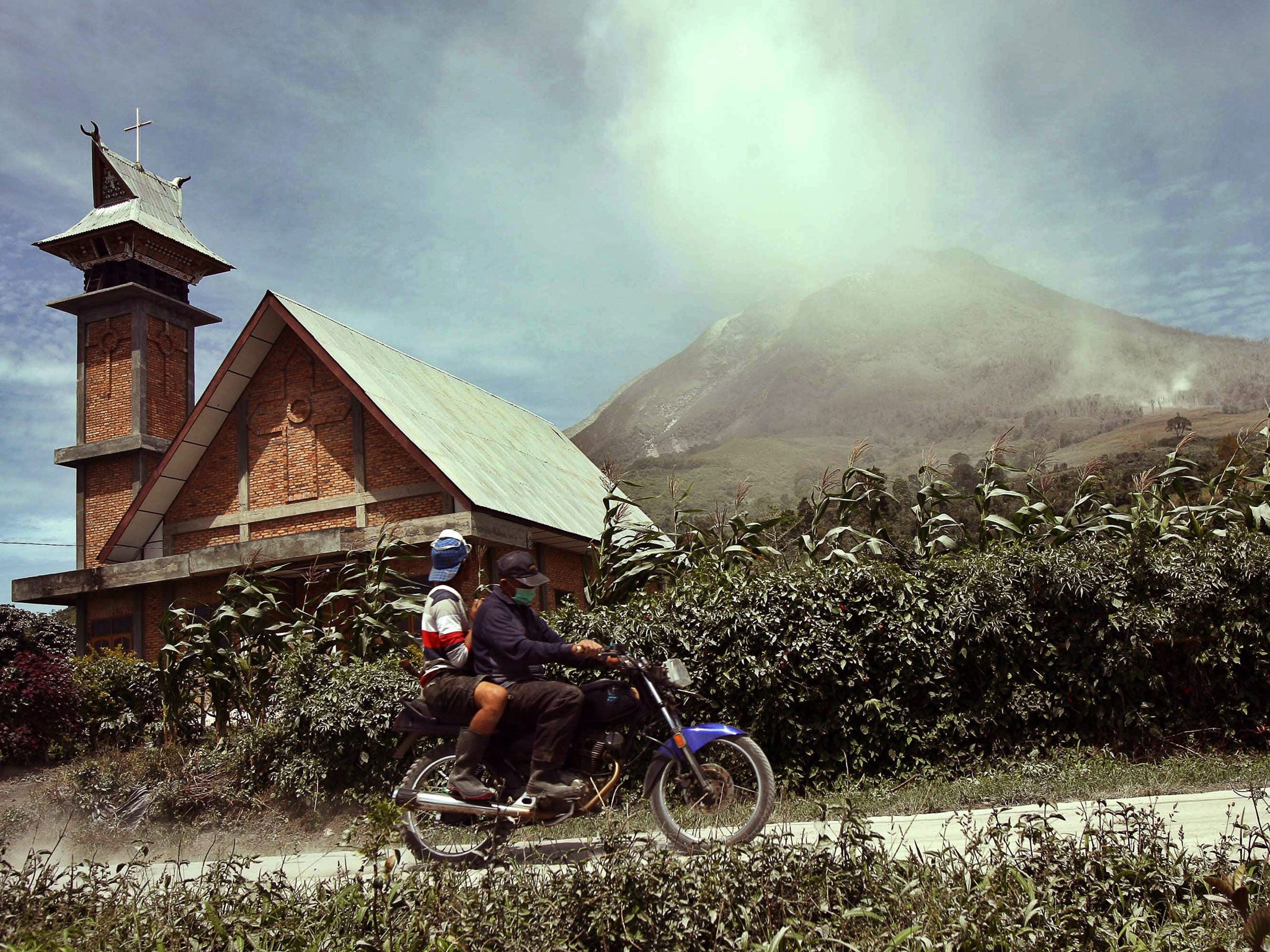Thousands flee to safety after Indonesian volcano Mount Sinabung erupts

Your support helps us to tell the story
From reproductive rights to climate change to Big Tech, The Independent is on the ground when the story is developing. Whether it's investigating the financials of Elon Musk's pro-Trump PAC or producing our latest documentary, 'The A Word', which shines a light on the American women fighting for reproductive rights, we know how important it is to parse out the facts from the messaging.
At such a critical moment in US history, we need reporters on the ground. Your donation allows us to keep sending journalists to speak to both sides of the story.
The Independent is trusted by Americans across the entire political spectrum. And unlike many other quality news outlets, we choose not to lock Americans out of our reporting and analysis with paywalls. We believe quality journalism should be available to everyone, paid for by those who can afford it.
Your support makes all the difference.Indonesian villagers ride a motorbike as Mount Sinabung spews hot gas and ashes in the background in Karo, North Sumatra province, on Monday. Thousands of people fled their homes after the volcano erupted, a disaster management official said.
Mount Sinabung, which last erupted in 2010, released ash and rocks early on Sunday, prompting the authorities to raise the alert level to the second highest, a spokesman for the National Disaster Management Agency said. Residents within three kilometres of the volcano were told to leave their homes.
Local authorities prepared 2,000 blankets and distributed masks to displaced people. They also have set up a health command post, Nugroho said. He added there was an urgent need for cooking ware, food for babies and medicine.
The August 2010 eruption killed two people and forced 30,000 others to flee. It caught many scientists off guard because they had failed to monitor the volcano, which had remained quiet for four centuries.
There are more than 129 active volcanoes in Indonesia, the world's largest archipelago nation. It is prone to seismic upheaval due to its location on the so-called "Ring of Fire" — a series of fault lines stretching from the Western Hemisphere through Japan and Southeast Asia.
AP
Join our commenting forum
Join thought-provoking conversations, follow other Independent readers and see their replies
Comments